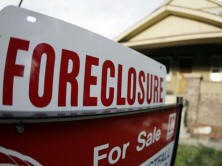All Sales in MLS January – May
| January | February | March | April | May | |
| 2006 | 5,243 | 5,860 | 6,713 | 6,709 | 7,585 |
| 2007 | 4,343 | 4,883 | 5,785 | 5,475 | 5,774 |
| 2008 | 2,868 | 3,070 | 3,854 | 4,844 | 5,647 |
And it’s the same news. As you can see from the chart showing sales from the Arizona Regional Multiple Listing Service (ARMLS) sales have been moving up since the first of the year. As you can also see – as I’m showing same month sales for the past two years – it is quite normal for sales to move up this time of the year. The most impressive number on the page is the total sales for May of 2008. Compare that to May of 2007. If you look at January of 2007 and compare it to January of 2008, we are down by almost 34%. Same comparison for February and we are down by 37%. March is 33% and April is down to an 11% difference. But in May it is only a 2% difference. As in, things are improving! That is the good news.
If that trend was to continue – and I believe it will – the total sales in the valley are starting to head towards “good timesâ€. However, there is a caveat. There is a problem and it isn’t going away anytime soon. We wrote about it last month and this month will give yet a different take on that same issue (the “bad†news part). Most of the sales reported in ARMLS — and that is most sales in the valley– are either short sales (pre-foreclosure) or Real Estate Owned by banks (foreclosures). Usually referred to as REO properties, it is the banks who are currently selling the most houses just now; either through a short sale where they announce what they will settle for or as the owner of the foreclosure.
Isn’t more business a good thing? Absolutely, yes. I am delighted to see that statistic moving north which is also contributing to a decline in inventory, particularly in the 350k and under range (the FHA price range). But as those banks continue to sell off their inventory of homes taken back and as they approve the short sales (where they are settling for less than they are owed) another thing is affected: neighborhood value. The sales prices that any appraiser will see when doing an appraisal on a “regular†open market listing are going to be lower. Significantly lower. When there is just one bank sale in a neighborhood and the rest of the sales are non-distressed open market sales, that one sale can be ignored. When the bank sales and the short sales comprise the bulk of the sales, they can’t and won’t be ignored.
This isn’t intended to panic anyone or cause concern. It simply is what is happening. Currently in the edge communities, sales are occurring of homes that are being sold for about 30% less than one can buy the land and build them. This is happening often enough that those sales are no longer “that low oneâ€, they are the market there.
Oddly enough, after those houses are sold off and if interest rates stay relatively low, you will read in the local and national news outlets that “prices are risingâ€. It will seem remarkable (as it is complete nonsense). What will have “risen†will be the median price. That number where half of the sales fall above and half fall below. Median prices have precisely nothing to do with short term price movement but people who do all of their “research†from an ivory tower don’t know that. So it will get printed and quoted. What will have risen aren’t THE prices but WHAT people are buying – as the cheaper product is gone.
The fact is prices will not start to go up until there is a rebalancing of inventory. Prices adjust in accordance with changes in supply and demand, monitored by fear and greed. This is not a complex subject but it can be made to seem that way. The main point here is that unless you plan on waiting for some years for prices to rise, right now is as good a time to sell as you are likely to see in the near future.

